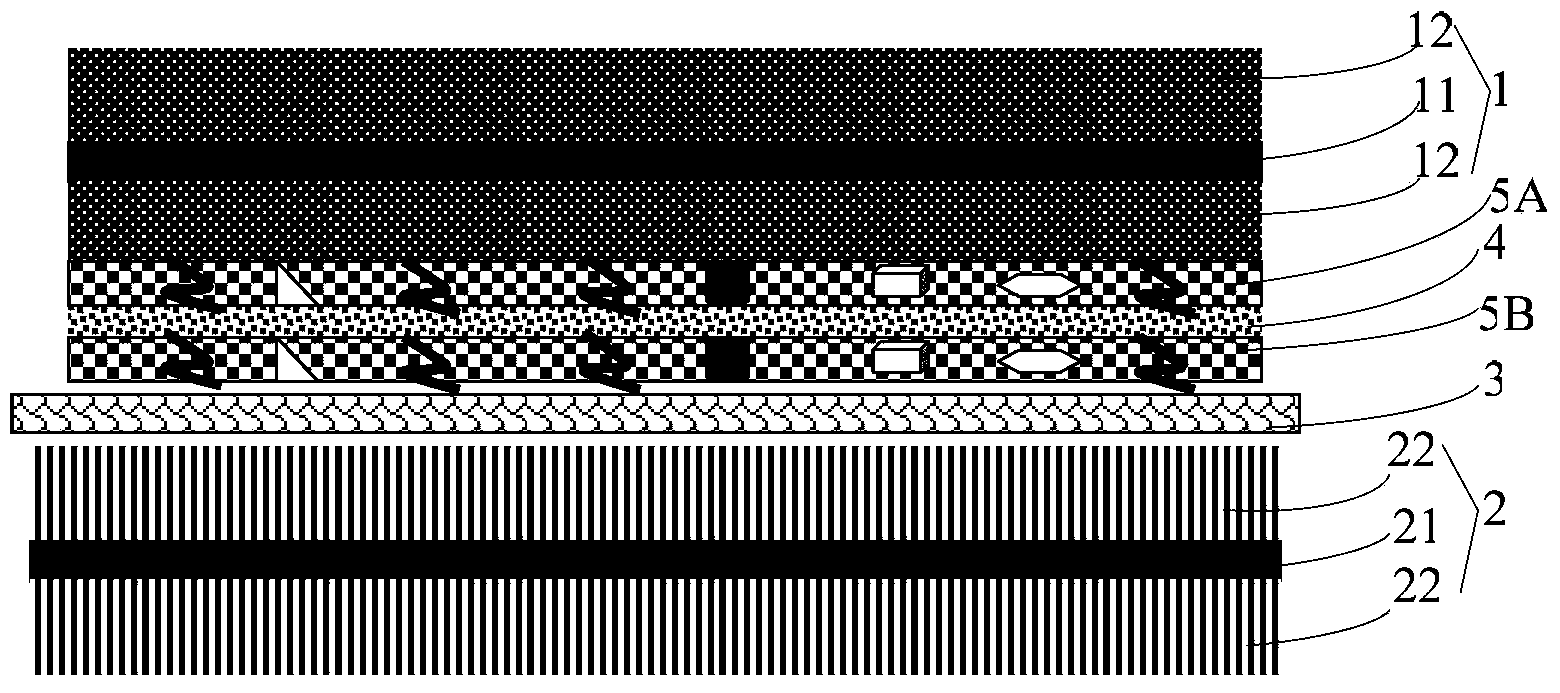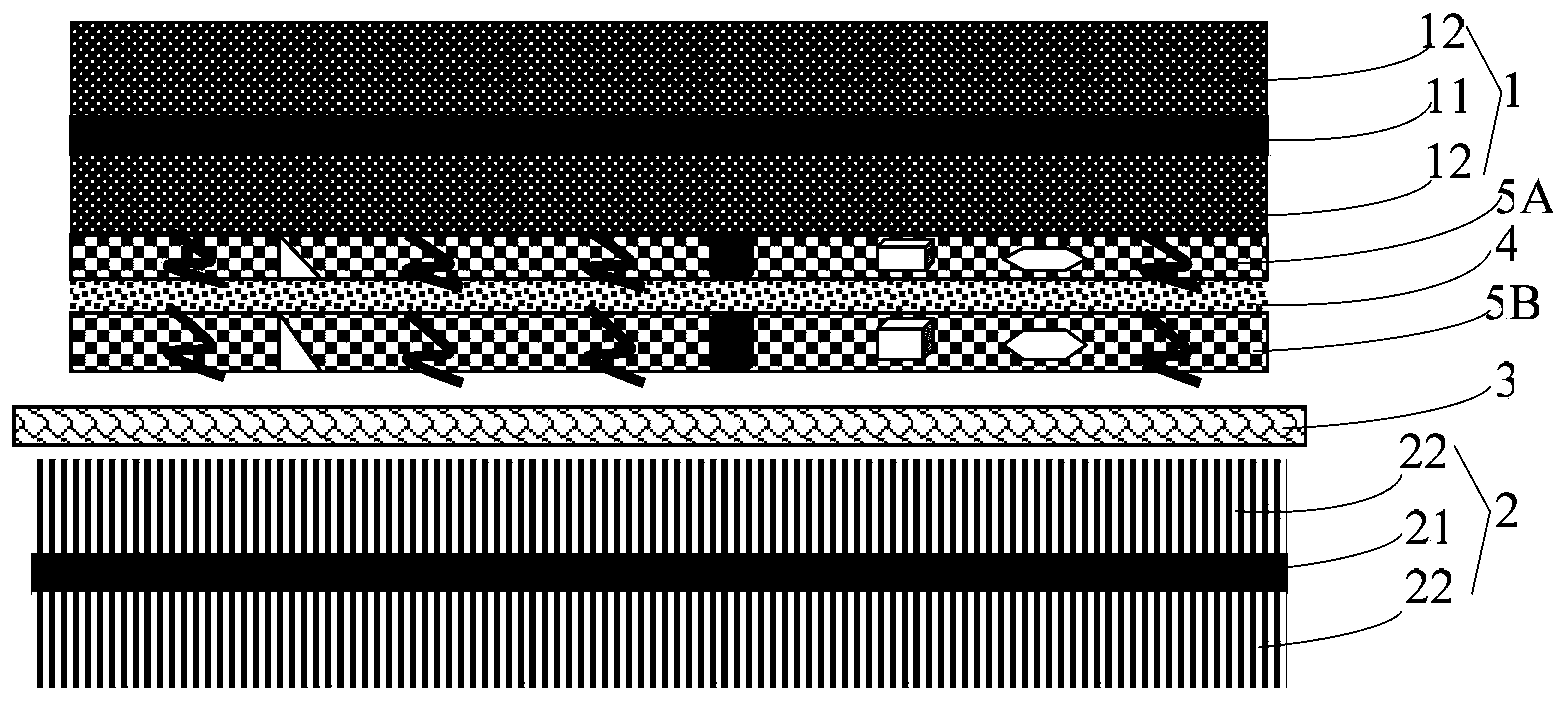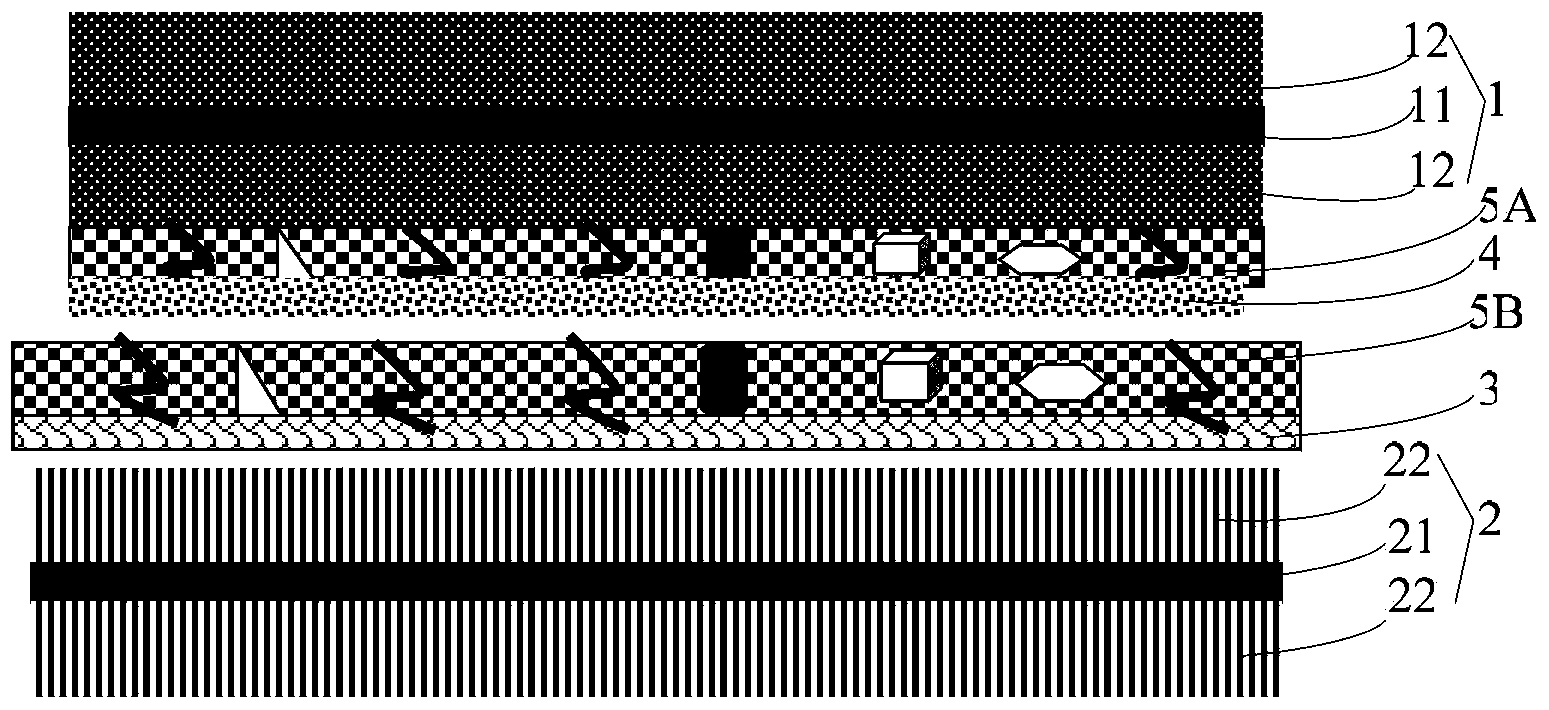High energy density lithium ion battery
A lithium-ion battery, high energy density technology, applied in secondary batteries, secondary battery repair/maintenance, circuits, etc., can solve the problems of SEI film instability, performance degradation, particle rupture, etc., to improve the first-time efficiency and energy Density, the effect of preventing damage
- Summary
- Abstract
- Description
- Claims
- Application Information
AI Technical Summary
Problems solved by technology
Method used
Image
Examples
Embodiment 1
[0051] Embodiment 1 (with reference to figure 1 )
[0052] Preparation of positive electrode sheet 1 for lithium-ion batteries: LiCoO 2 As the first positive electrode active material, LiNi 0.5 mn 0.3 co 0.2 o 2 As the second positive electrode active material (wherein the mass ratio of the first positive electrode active material to the second positive electrode active material is 80:20), PVDF is used as a binder, and conductive carbon (SP) is used as a conductive agent according to the positive electrode active material: PVDF: SP mass The ratio is 96:2:2, dissolved in the solvent N-methylpyrrolidone (NMP) and stirred evenly to make a slurry, and then the slurry is evenly coated on the positive electrode current collector 21 (using aluminum foil), and dried to make lithium The positive electrode sheet 1 of the ion battery.
[0053] Preparation of the first polymer conductive layer 5A: using carbon nanotubes (CNTs) as electronically conductive materials, Al 2 o 3 As an...
Embodiment 2
[0059] Embodiment 2 (with reference to figure 2 )
[0060] Preparation of positive electrode sheet 1 for lithium-ion batteries: LiCo 0.8 al 0.2 o 2 As the first positive electrode active material, Li 1.3 mn 2 o 4 As the second positive electrode active material (wherein the mass ratio of the first positive electrode active material to the second positive electrode active material is 95:5), PVDF is used as a binder, and conductive carbon (SP) is used as a conductive agent, according to the positive electrode active material: PVDF: The mass ratio of SP is 96:2:2, which is dissolved in N-methylpyrrolidone (NMP) and stirred evenly to make a slurry, and then the slurry is evenly coated on the positive electrode current collector 21 (using aluminum foil), and then dried Lithium-ion battery positive pole piece 1.
[0061] Preparation of the first polymer conductive layer 5A: using conductive carbon (SP) as the electronically conductive material, SiO 2As an ion-conducting mat...
Embodiment 3
[0067] Embodiment 3 (with reference to image 3 )
[0068] Preparation of positive electrode sheet 1 for lithium-ion batteries: LiCoO 2 As the first positive electrode active material, LiNi 0.8 co 0.15 al 0.05 o 2 As the second positive electrode active material (wherein the mass ratio of the first positive electrode active material to the second positive electrode active material is 60:40), PVDF is used as a binder, and conductive carbon (SP) is used as a conductive agent according to the positive electrode active material: PVDF: SP mass The ratio is 96:2:2, dissolved in the solvent N-methylpyrrolidone (NMP) and stirred evenly to make a slurry, and then the slurry is evenly coated on the positive electrode current collector 21 (using aluminum foil), and dried to make lithium Positive pole piece 1 of ion battery.
[0069] Preparation of the first polymer conductive layer 5A: using CNT as an electronically conductive material, Li 3 PO 4 As an ion-conducting material, SB...
PUM
| Property | Measurement | Unit |
|---|---|---|
| Thickness | aaaaa | aaaaa |
| Thickness | aaaaa | aaaaa |
| Thickness | aaaaa | aaaaa |
Abstract
Description
Claims
Application Information
 Login to View More
Login to View More - R&D
- Intellectual Property
- Life Sciences
- Materials
- Tech Scout
- Unparalleled Data Quality
- Higher Quality Content
- 60% Fewer Hallucinations
Browse by: Latest US Patents, China's latest patents, Technical Efficacy Thesaurus, Application Domain, Technology Topic, Popular Technical Reports.
© 2025 PatSnap. All rights reserved.Legal|Privacy policy|Modern Slavery Act Transparency Statement|Sitemap|About US| Contact US: help@patsnap.com



